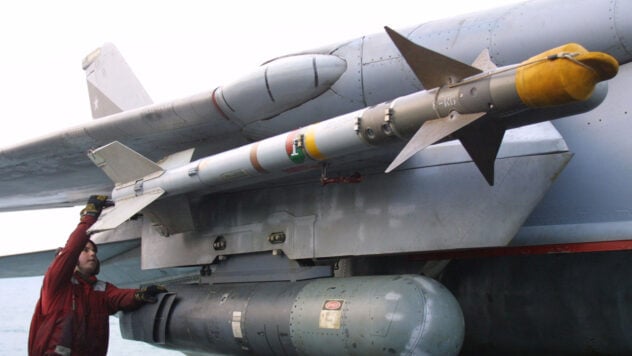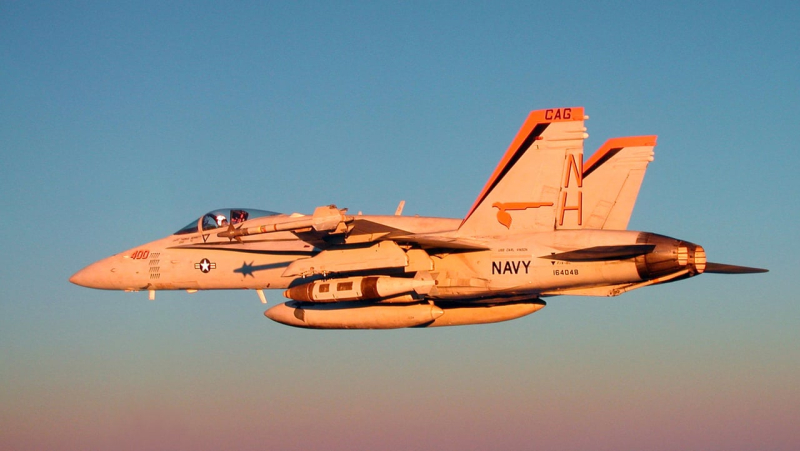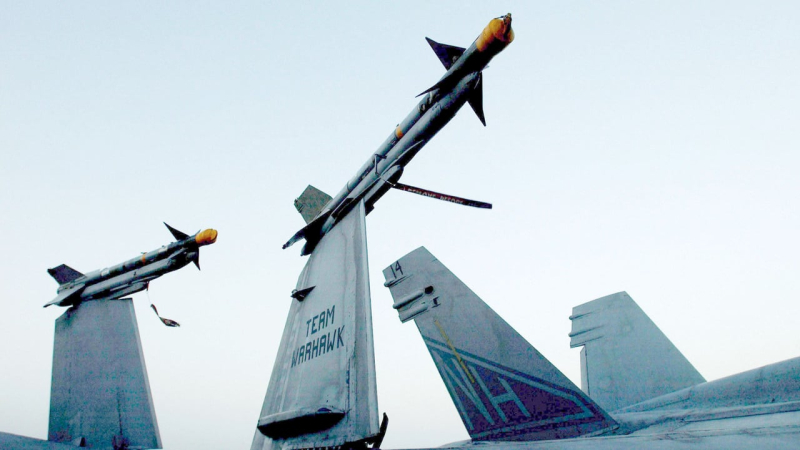 < /p>
< /p>
Following the meeting in the Ramstein format, Canadian Defense Minister Anita Anand announced the provision of 43 AIM-9 short-range air-to-air missiles to Ukraine.
According to her, these missiles will help Ukraine defend their skies from constant attacks from Russia.
Already in October of the same year, the head of the US Department of Defense, Lloyd Austin, announced that these aircraft missiles would be used by Ukraine as a means of air defense, which puzzled many.
Currently watching
What is known about AIM-9 missiles, what are their features, technical characteristics and how they will help protect the sky — read in the ICTV Facts material.
AIM-9 missiles: what is known
AIM-9 Sidewinder — short-range air-to-air missile. The rocket has an interesting and long history of creation. Development began in the late 1940s; in 1956, the missile entered service with the US Navy; in 1964 — into service with the country's Air Force.
Today the AIM-9 is in service in the US, UK, France, Germany, Australia and other countries around the world. Over the years, the missile has been used by the air forces of more than 50 countries.
AIM-9 was developed by Raytheon. After entering service in 1956, the missile was improved many times, but it is still in mass production.
Most modifications of the AIM-9 are equipped with an infrared homing system.
Since 1955, more than 200 thousand AIM-9 missiles have been produced. In addition, these missiles shot down 270 aircraft. There are more than 10 versions of the AIM-9, but which one Ukraine will receive is still unknown.
The AIM-9 Sidewinder can be carried by most modern fighters, including the F-16, F-15, and fifth-generation fighters F-22 Raptor and F-35 Lightning II.
— The weapon is configured for easy installation on a wide range of modern aircraft, including the F-15C Eagle, F-15E Strike Eagle, F-16 Fighting Falcon, F/A-18 Super Hornet, E/A-18G Growler, F-22 Raptor and all F-35 Joint Strike Fighter variants, — Raytheon reports.

F/A-18 fighter-bomber with a missile AIM-9 Sidewinder/Getty Images
The AIM-9 missile has many modifications, including:
- Option AIM-9 A/B — it uses a 4.5 kg explosive warhead. These missiles can be used to destroy non-maneuverable targets at ranges from 900 m to 4.8 km.
- AIM-9С — semi-active radar homing version of the missile.
- AIM-9D — here the speed and range were increased to 18 km.
- AIM-9E — the first version developed specifically by the US Air Force. This is an improved version of the AIM-9D with new thermoelectric (Peltier) cooling and increased tracking speed.
- AIM-9F — European development of the AIM-9D, of which 15 thousand were designed by Bodensee Gerätetechnik (BGT) in Germany.
- Another option for the Navy was the AIM-9G missile, an improved version of the AIM-9D.
- To improve the reliability of the AIM-9G, the Navy developed the AIM-9h. The main difference from the G version was solid-state electronics in the guidance and control system.
- According to Defense Express, the AIM-9X Block II versions can destroy targets up to 40 km away — such an indicator will not be enough to consider it a missile that will actively shoot down Russian aircraft, but at the same time the missile will be an excellent weapon against Russian missiles and Shahed-type kamikaze drones.
AIM Features- 9 and expert opinion

AIM-9 Sidewinder missile on an F/A-18 bomber/Getty Images
According to military expertAlexander Kovalenko, AIM-9 missiles were created back in the 1950s. Then they began to be developed for deployment on aircraft of that time.
— It was the first American air-to-air guided missile that had an infrared guidance head. Since the AIM-9 was put into service, a large number of modifications have appeared that meet the needs of our time, — says the expert.
The most modern modification — AIM-9X missile. They have better performance against heat traps that try to throw missiles off their flight path. Also, version X has the ability to bypass electronic interference created by the enemy.
In general, AIM-9 missiles can destroy objects in the middle zone. This is up to 30-35 km. However, this depends precisely on the modification of the missile.
When asked whether the Ukrainian Armed Forces will be able to use the AIM-9 together with Soviet aircraft, Kovalenko replied that this is quite possible.
— In my opinion, the integration of missiles into Soviet aircraft, for example, the MiG-29 or Su-27, is quite real. That is, for the effective use of AIM-9 it is not necessary to have ultra-modern aircraft, — adds the expert.
Kovalenko also spoke about the tasks and purpose of AIM-9. According to the expert, these aspects depend on the specific modification of the rocket.
— For example, there are air-to-air modifications, and there are air-to-surface modifications. Moreover, there is also the option of surface-to-air, anti-radar and anti-tank missiles. That is, everything depends on the modification that Ukraine will receive. Most often — these are air-to-air missiles, — the expert concludes.
Aircraft missile as air defense?
Along with the missile transfer in October 2023, Pentagon chief Lloyd Austin said that AIM-9 missiles were being transferred not only for air-to-air work, but also for air defense.
Alexander Kovalenko says that in fact there is nothing surprising no, and this is common practice when aircraft missiles are used in air defense systems.
— In the case of the AIM-9, we are talking specifically about the MIM-72A/M48 Chaparral. This system was put into service in 1969, but by 1997 it was completely withdrawn from the US Army. In turn, the United States had 600 launchers in its arsenal, with more than 5.3 thousand missiles in ammunition. I wouldn’t be surprised if these systems will also soon end up in Ukraine. And even despite their archaic nature, as a means of intercepting the above-mentioned targets at distances of up to 5 km, they are quite effective, — he says.
Kovalenko adds that in the current conditions, these missiles are not so much a means of combating enemy aircraft in the air, but rather a means of intercepting Shahed-131/136 kamikaze drones and subsonic cruise missiles , X-101/555 and Caliber cruise missiles.
Technical characteristics
- Weight — 85.3 kg
- Length — 3.02 m.
- Diameter — 127 mm.
- Warhead weight — from 4.5 kg to 11 kg.
- Range — up to 35 km.
- Maximum speed — more than Mach 2.5.
- Rocket carriers: F-15C Eagle, F-15E Strike Eagle, F-16 Fighting Falcon, F/A-18 Super Hornet, E/A-18G Growler, F- 22 Raptor and all variants of the F-35 Joint Strike Fighter.

